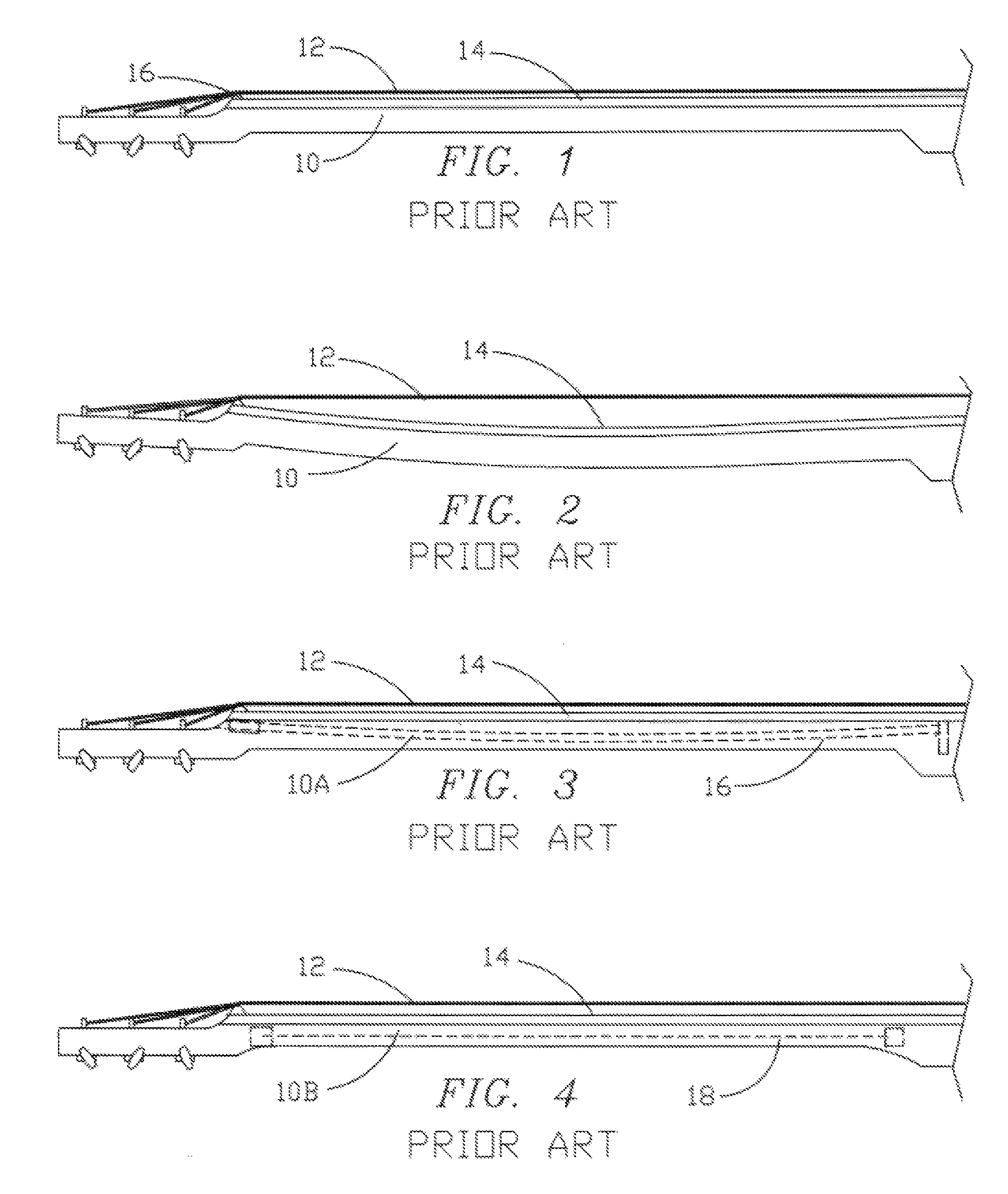Dual-tensioned neck truss system for stringed musical instruments
a truss system and stringed technology, applied in stringed musical instruments, musical instruments, guitars, etc., can solve the problems of difficult removal of truss members for repair or replacement, difficult truss repair/adjustment, and difficulty in adjusting the truss member
- Summary
- Abstract
- Description
- Claims
- Application Information
AI Technical Summary
Benefits of technology
Problems solved by technology
Method used
Image
Examples
Embodiment Construction
[0038]FIG. 1 is a side view of a stringed musical instrument neck 10 and tuning headstock of a known art type that is made and used without a neck truss system. Taut strings 12 are supported so as to be spaced uniformly above the fingerboard 14, with string height provided at the left hand end by a string-supporting nut 16, and at the right hand end by a string-supporting bridge (not shown).
[0039]For simplicity, fingerboard 14 is shown as fretless, however the upper line of the fingerboard as shown also corresponds to a playing plane contour defined by the crowned tips of a set of frets of a fretted fingerboard, a.k.a. fret-board. It is generally desired for ease of playing that the playing plane be kept substantially straight longitudinally so that the nut 16 and bridge can hold the taut strings at a close spacing above the playing plane that is generally uniform throughout the neck length while sufficiently spaced to allow the strings to vibrate free from buzzing against next high...
PUM
 Login to View More
Login to View More Abstract
Description
Claims
Application Information
 Login to View More
Login to View More - R&D
- Intellectual Property
- Life Sciences
- Materials
- Tech Scout
- Unparalleled Data Quality
- Higher Quality Content
- 60% Fewer Hallucinations
Browse by: Latest US Patents, China's latest patents, Technical Efficacy Thesaurus, Application Domain, Technology Topic, Popular Technical Reports.
© 2025 PatSnap. All rights reserved.Legal|Privacy policy|Modern Slavery Act Transparency Statement|Sitemap|About US| Contact US: help@patsnap.com



